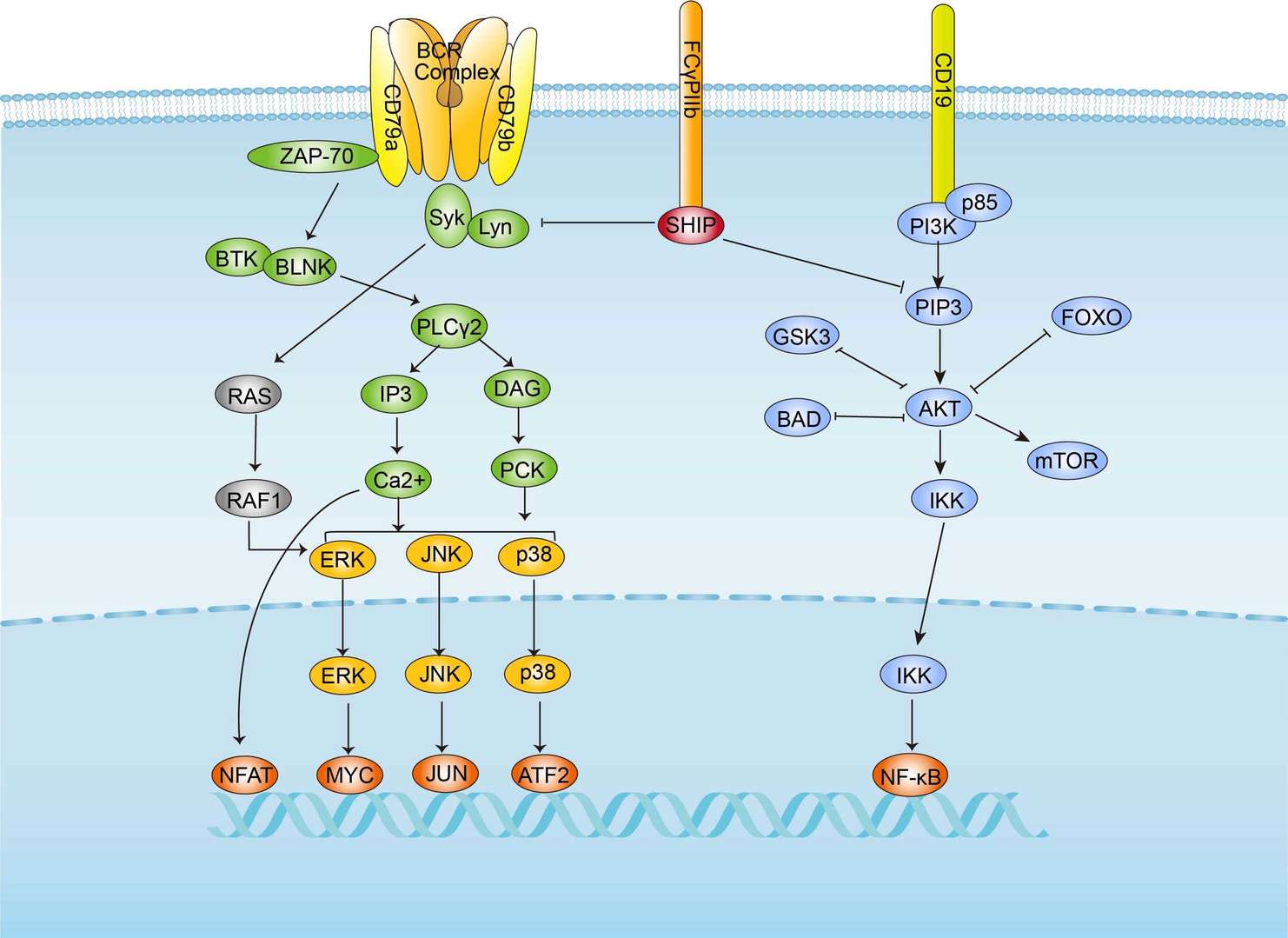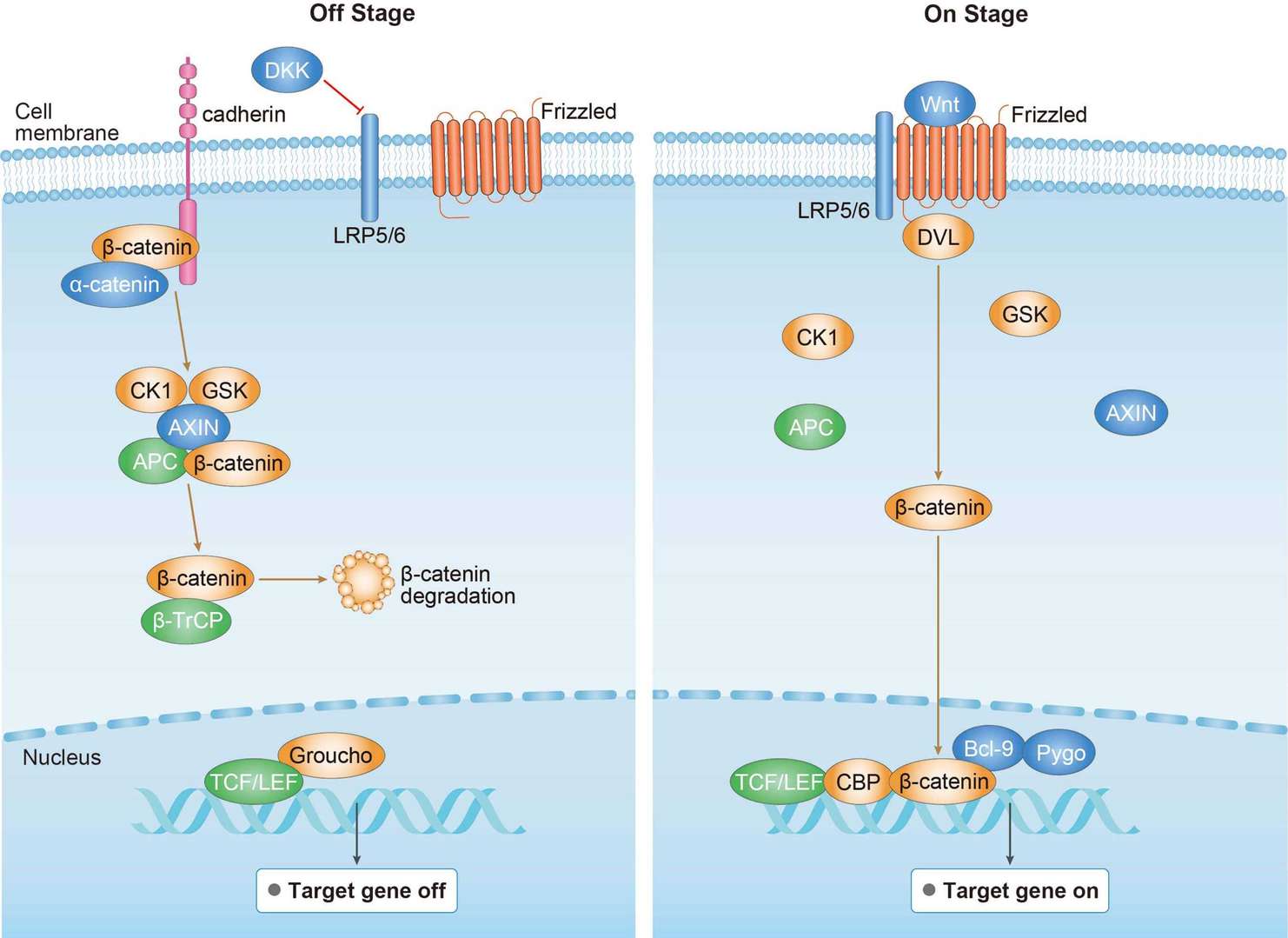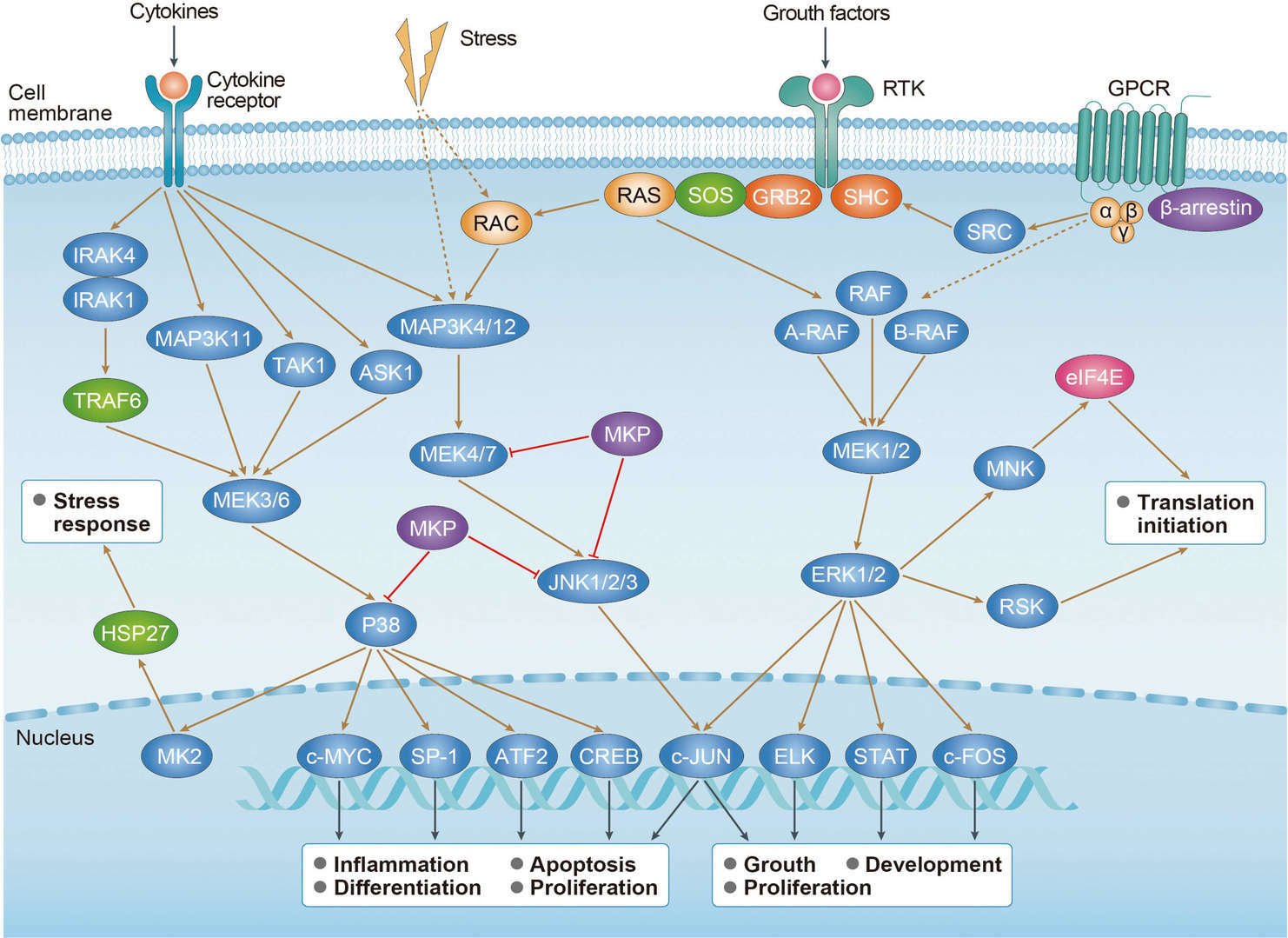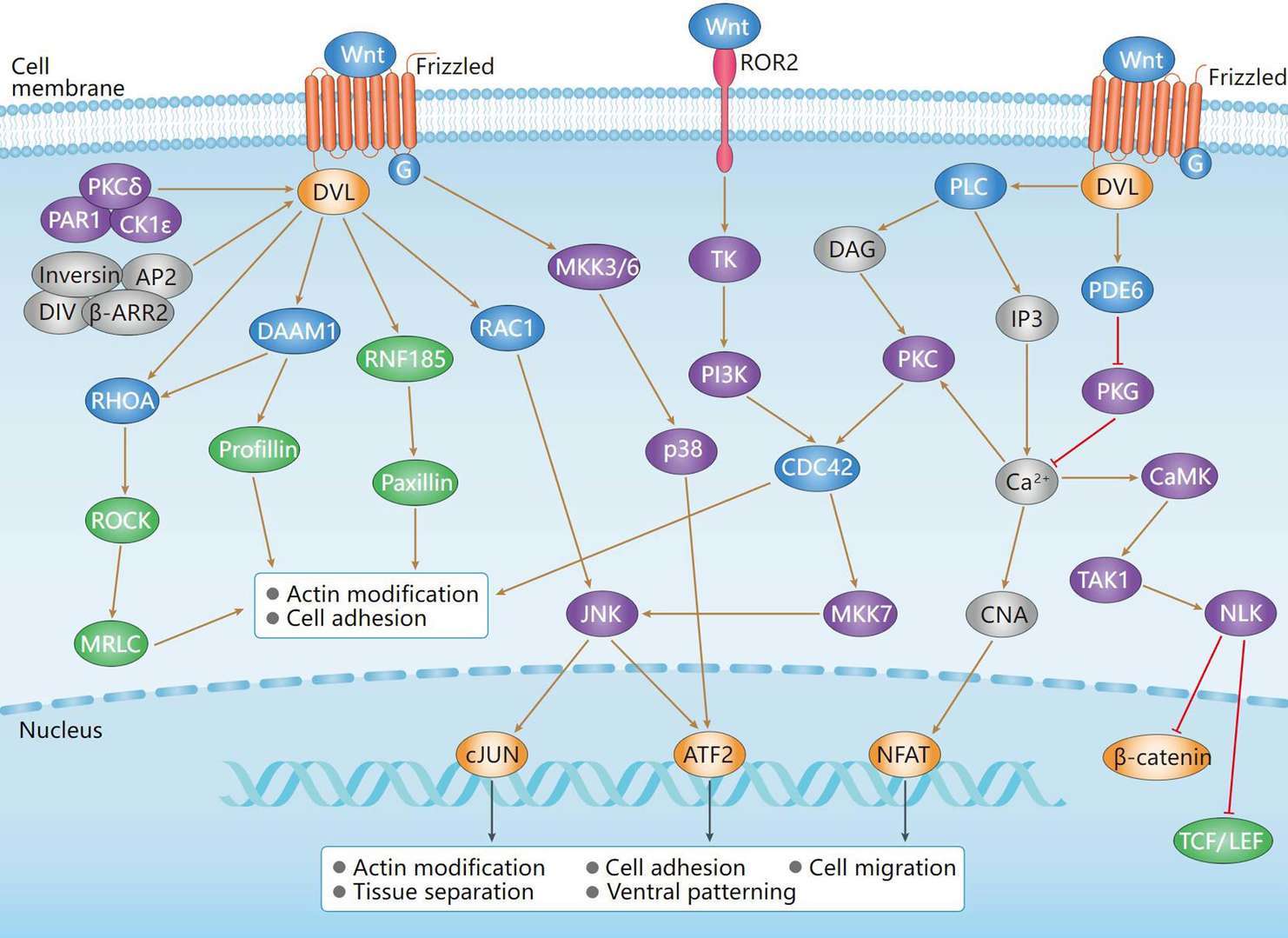Recombinant Rabbit Anti-ATF2 Antibody (clone R09-8F4) (CAT#: VS3-FY102)
This product is a recombinant rabbit antibody that recognizes human ATF2 protein. It can detect a band of approximately 55 kDa (observedd molecular weight: 70 kDa).

Figure 1. Recombinant Rabbit Anti-ATF2 Antibody (clone R09-8F4) in WB.
Western blot analysis of ATF2 in Jurkat lysates using ATF2 antibody.
Specifications
- Immunogen
- A synthetic peptide of human ATF2
- Host Species
- Rabbit
- Type
- Rabbit IgG
- Specificity
- Human ATF2
- Species Reactivity
- Human
- Clone
- R09-8F4
- Applications
- Western Blot, Immunocytochemistry, Immunofluorescence, Immunoprecipitation
- Conjugate
- Unconjugated
- MW
- Calculated MW: 55 kDa; Observed MW: 70 kDa
Product Property
- Purification
- Affinity Purified
- Purity
- >95%
- Format
- Liquid
- Buffer
- 50 mM Tris-Glycine, pH 7.4, 0.15 M NaCl, 40% Glycerol, 0.05% BSA
- Preservative
- 0.01% Sodium azide
- Storage
- Centrifuge briefly prior to opening vial. Store at +4°C short term (1-2 weeks). Aliquot and store at -20°C long term. Avoid repeated freeze/thaw cycles.
Applications
- Application Notes
- Western Blot: 1/500-1/1000
Immunofluorescence: 1/50-1/200
Immunoprecipitation: 1/20
Target
- Alternative Names
- Activating Transcription Factor 2; Cyclic AMP-Responsive Element-Binding Protein 2; CAMP Response Element-Binding Protein CRE-BP1; CAMP-Dependent Transcription Factor ATF-2; Histone Acetyltransferase ATF2; CREB-2; CREB2; HB16; Activating Transcription Factor 2 Splice Variant ATF2-Var2
- Gene ID
- 1386
- UniProt ID
- P15336
- Sequence Similarities
- Belongs to the bZIP family. ATF subfamily.
- Cellular Localization
- Cytoplasm, Membrane, Mitochondrion, Mitochondrion outer membrane, Nucleus
- Post Translation Modifications
- Phosphorylation of Thr-69 by MAPK14 and MAPK11, and at Thr-71 by MAPK1/ERK2, MAPK3/ERK1, MAPK11, MAPK12 and MAPK14 in response to external stimulus like insulin causes increased transcriptional activity (PubMed:9430721, PubMed:12110590).
Phosphorylated by PLK3 following hyperosmotic stress (PubMed:21098032).
Also phosphorylated and activated by JNK and CaMK4 (PubMed:8855261).
ATM-mediated phosphorylation at Ser-490 and Ser-498 stimulates its function in DNA damage response (PubMed:15916964).
Phosphorylation at Ser-62, Thr-73 and Ser-121 activates its transcriptional activity (PubMed:15105425).
Phosphorylation at Thr-69 or Thr-71 enhances acetylation of histones H2B and H4 (PubMed:10821277).
- Protein Refseq
- NP_001243019.1; NP_001243020.1; NP_001243021.1
- Function
- Transcriptional activator which regulates the transcription of various genes, including those involved in anti-apoptosis, cell growth, and DNA damage response. Dependent on its binding partner, binds to CRE (cAMP response element) consensus sequences (5'-TGACGTCA-3') or to AP-1 (activator protein 1) consensus sequences (5'-TGACTCA-3'). In the nucleus, contributes to global transcription and the DNA damage response, in addition to specific transcriptional activities that are related to cell development, proliferation and death. In the cytoplasm, interacts with and perturbs HK1- and VDAC1-containing complexes at the mitochondrial outer membrane, thereby impairing mitochondrial membrane potential, inducing mitochondrial leakage and promoting cell death. The phosphorylated form (mediated by ATM) plays a role in the DNA damage response and is involved in the ionizing radiation (IR)-induced S phase checkpoint control and in the recruitment of the MRN complex into the IR-induced foci (IRIF). Exhibits histone acetyltransferase (HAT) activity which specifically acetylates histones H2B and H4 in vitro (PubMed:10821277).
In concert with CUL3 and RBX1, promotes the degradation of KAT5 thereby attenuating its ability to acetylate and activate ATM. Can elicit oncogenic or tumor suppressor activities depending on the tissue or cell type.
Recommended Products
Secondary Antibody
Isotype Control
Related Resources
Product Notes
This is a product of Creative Biolabs' Hi-Affi™ recombinant antibody portfolio, which has several benefits including:
• Increased sensitivity
• Confirmed specificity
• High repeatability
• Excellent batch-to-batch consistency
• Sustainable supply
• Animal-free production
See more details about Hi-Affi™ recombinant antibody benefits.
Downloads
Download resources about recombinant antibody development and antibody engineering to boost your research.
See other products for "ATF2"
Rabbit Monoclonal Antibody
| CAT | Product Name | Application | Type |
|---|---|---|---|
| MOR-0274 | Hi-Affi™ Rabbit Anti-ATF2 Recombinant Antibody (clone DS274AB) | IF, IP, WB | Rabbit IgG |
Recombinant Antibody
| CAT | Product Name | Application | Type |
|---|---|---|---|
| MRO-0130-CN | Rabbit Anti-ATF2 Recombinant Antibody (clone CBACN-047) | WB, IF, IHC, IP | Rabbit IgG |
| ZG-0315F | Mouse Anti-ATF2 Recombinant Antibody (ZG-0315F) | WB, IHC, ELISA | Mouse IgG |
| ZG-0551J | Rabbit Anti-ATF2 Recombinant Antibody (clone 4F2) | ELISA, WB, IF | Rabbit IgG |
| ZG-0552J | Rabbit Anti-ATF2 Recombinant Antibody (clone 3D12) | ELISA, WB, IHC | Rabbit IgG |
| VS3-CJ672 | Rabbit Anti-ATF2 Recombinant Antibody (VS3-CJ672) | WB, ICC, IF, IHC, IP | Rabbit IgG |
Customer Reviews and Q&As
There are currently no Customer reviews or questions for VS3-FY102. Click the button above to contact us or submit your feedback about this product.
View the frequently asked questions answered by Creative Biolabs Support.
For Research Use Only. Not For Clinical Use.
For research use only. Not intended for any clinical use. No products from Creative Biolabs may be resold, modified for resale or used to manufacture commercial products without prior written approval from Creative Biolabs.
This site is protected by reCAPTCHA and the Google Privacy Policy and Terms of Service apply.












 BCR Signaling Pathway
BCR Signaling Pathway
 Canonical Wnt Signaling Pathway
Canonical Wnt Signaling Pathway
 MAPK Signaling Pathway
MAPK Signaling Pathway
 Non-Canonical Wnt Signaling Pathway
Non-Canonical Wnt Signaling Pathway
